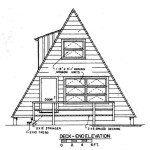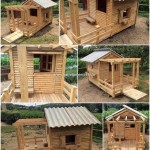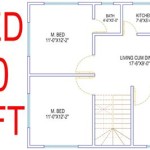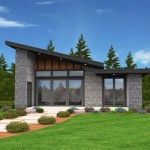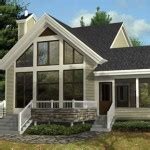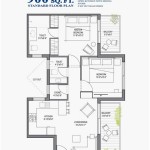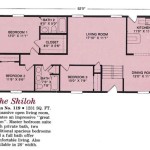Drawing a house plan is the process of creating a detailed, scaled drawing that represents the layout and dimensions of a house. This plan serves as a blueprint for the construction of the house and includes information such as the placement of rooms, doors, windows, and utilities. House plans are essential for obtaining building permits, estimating construction costs, and communicating design ideas with contractors and other professionals.
Creating a house plan involves several steps, including determining the overall size and shape of the house, laying out the rooms and other spaces, and specifying the dimensions and locations of doors, windows, and other features. The plan should also include details such as the type of foundation, roof, and exterior materials. Once the plan is complete, it can be used to create a cost estimate for the construction project and to obtain building permits from the local authorities.
Drawing a house plan is a complex and technical task that requires knowledge of building codes and construction practices. It is recommended that homeowners work with a qualified architect or designer to create a house plan that meets their specific needs and requirements.
When drawing a house plan, it is important to consider the following 10 key points:
- Overall size and shape
- Room layout
- Door and window placement
- Foundation type
- Roof style
- Exterior materials
- Building codes
- Construction practices
- Cost estimate
- Building permits
By carefully considering these factors, homeowners can create a house plan that meets their specific needs and requirements.
Overall size and shape
The overall size and shape of a house plan is one of the most important considerations. The size of the house will determine the number of rooms and the amount of space available, while the shape of the house will affect the layout of the rooms and the overall aesthetic of the house.
- Size
The size of a house plan is typically measured in square feet. The square footage of a house includes all of the finished space in the house, including the living room, dining room, kitchen, bedrooms, bathrooms, and hallways. When determining the size of a house plan, it is important to consider the number of people who will be living in the house, as well as their needs and lifestyle. - Shape
The shape of a house plan can vary greatly. Some of the most common house shapes includeL U The shape of the house will affect the layout of the rooms, as well as the overall aesthetic of the house. For example, a square or rectangular house plan will typically have a more traditional layout, while an L-shaped or U-shaped house plan will allow for more open and flowing spaces. - Orientation
The orientation of a house plan is also an important consideration. The orientation of the house will determine how the house is positioned on the lot and how it will receive sunlight. In the Northern Hemisphere, houses that are oriented to the south will receive the most sunlight, while houses that are oriented to the north will receive the least sunlight. - Lot size and shape
The size and shape of the lot will also affect the overall size and shape of the house plan. A larger lot will allow for a larger house, while a smaller lot will require a smaller house. The shape of the lot will also affect the layout of the house. For example, a lot that is long and narrow will require a house plan that is also long and narrow.
By carefully considering the overall size and shape of the house plan, homeowners can create a house that meets their specific needs and requirements.
Room layout
The room layout is one of the most important aspects of a house plan. The layout of the rooms will determine how the house flows and how it is used. There are a number of factors to consider when planning the room layout, including the number of rooms, the size of the rooms, the relationship between the rooms, and the traffic flow through the house.
Number of rooms
The number of rooms in a house plan will vary depending on the size of the house and the needs of the family. A small house may have only a few rooms, while a large house may have many rooms. When determining the number of rooms, it is important to consider the number of people who will be living in the house, as well as their needs and lifestyle.
Size of the rooms
The size of the rooms in a house plan will also vary depending on the size of the house and the needs of the family. Some rooms, such as the living room and kitchen, may be larger than other rooms, such as the bedrooms and bathrooms. When determining the size of the rooms, it is important to consider how the rooms will be used and how much furniture and other items will need to be accommodated.
Relationship between the rooms
The relationship between the rooms in a house plan is also important to consider. The rooms should be arranged in a way that makes sense and that allows for easy flow from one room to another. For example, the living room should be located near the kitchen and dining room, and the bedrooms should be located near the bathrooms.
Traffic flow
The traffic flow through a house plan is also important to consider. The house should be designed in a way that allows for easy movement from one room to another. There should be no dead ends or bottlenecks in the traffic flow. When planning the traffic flow, it is important to consider how the house will be used and how people will move through the house.
By carefully considering the room layout, homeowners can create a house that meets their specific needs and requirements.
Door and window placement
Door and window placement is an important consideration in house plan design. The placement of doors and windows can affect the flow of traffic through the house, the amount of natural light in the house, and the overall aesthetic of the house.
- Traffic flow
The placement of doors and windows can affect the flow of traffic through the house. Doors should be placed in locations that allow for easy movement from one room to another. Windows should be placed in locations that allow for natural light to enter the house. When planning the placement of doors and windows, it is important to consider how the house will be used and how people will move through the house. - Natural light
The placement of windows can affect the amount of natural light in the house. Windows should be placed in locations that allow for natural light to enter the house. When planning the placement of windows, it is important to consider the orientation of the house and the amount of sunlight that the house will receive. For example, houses that are oriented to the south will receive more sunlight than houses that are oriented to the north. - Aesthetics
The placement of doors and windows can affect the overall aesthetic of the house. The size, shape, and style of the doors and windows can all contribute to the overall look of the house. When planning the placement of doors and windows, it is important to consider the style of the house and the desired aesthetic. - Privacy
The placement of windows can affect the privacy of the house. Windows should be placed in locations that allow for privacy while still allowing for natural light to enter the house. When planning the placement of windows, it is important to consider the location of neighboring houses and the amount of privacy that is desired.
By carefully considering the placement of doors and windows, homeowners can create a house that meets their specific needs and requirements.
Foundation type
The type of foundation is an important consideration in house plan design. The foundation is the structural support for the house and it must be able to support the weight of the house and protect it from the elements.
- Slab foundation
A slab foundation is a single, continuous piece of concrete that is poured on the ground. Slab foundations are relatively inexpensive to build and they are well-suited for houses that are built on level ground. However, slab foundations are not as strong as other types of foundations and they are not suitable for houses that are built on sloping ground or in areas with high water tables.
- Crawl space foundation
A crawl space foundation is a foundation that has a small, enclosed space between the ground and the floor of the house. Crawl space foundations are more expensive to build than slab foundations, but they are stronger and they are better suited for houses that are built on sloping ground or in areas with high water tables.
- Basement foundation
A basement foundation is a foundation that has a full, enclosed space below the ground floor of the house. Basement foundations are the most expensive to build, but they are also the strongest and they provide the most space for storage and other uses.
- Pier foundation
A pier foundation is a foundation that is supported by a series of piers that are driven into the ground. Pier foundations are well-suited for houses that are built on unstable ground or in areas with high water tables.
The type of foundation that is best for a particular house will depend on the soil conditions, the climate, and the budget. It is important to consult with a qualified engineer to determine the best type of foundation for a particular house.
Roof style
The roof style is an important consideration in house plan design. The roof style can affect the overall look of the house, the amount of natural light in the house, and the energy efficiency of the house.
- Gable roof
A gable roof is a roof with two sloping sides that meet at a ridge. Gable roofs are the most common type of roof in the United States. They are relatively inexpensive to build and they are well-suited for all types of climates. Gable roofs can be used to create a variety of different looks, from traditional to modern.
- Hip roof
A hip roof is a roof with four sloping sides that meet at a ridge. Hip roofs are more expensive to build than gable roofs, but they are also stronger and more durable. Hip roofs are well-suited for houses that are built in areas with high winds or heavy snow. Hip roofs can be used to create a variety of different looks, from traditional to modern.
- Flat roof
A flat roof is a roof with a slight slope. Flat roofs are less expensive to build than gable roofs or hip roofs, but they are also less durable. Flat roofs are well-suited for houses that are built in areas with mild climates. Flat roofs can be used to create a modern look.
- Shed roof
A shed roof is a roof with a single sloping side. Shed roofs are the least expensive to build, but they are also the least durable. Shed roofs are well-suited for small houses or outbuildings. Shed roofs can be used to create a modern or industrial look.
The type of roof style that is best for a particular house will depend on the climate, the budget, and the desired aesthetic. It is important to consult with a qualified architect or engineer to determine the best type of roof style for a particular house.
Exterior materials
The exterior materials of a house are an important consideration in house plan design. The exterior materials will affect the overall look of the house, the durability of the house, and the energy efficiency of the house.
There are a variety of different exterior materials to choose from, including wood, brick, stone, stucco, and siding. Each type of material has its own advantages and disadvantages. Wood is a popular choice for exterior materials because it is relatively inexpensive and easy to work with. However, wood is not as durable as other materials and it requires regular maintenance. Brick is another popular choice for exterior materials because it is durable and fire-resistant. However, brick is more expensive than wood and it can be difficult to work with. Stone is a durable and beautiful material, but it is also expensive and difficult to work with. Stucco is a type of plaster that is applied to the exterior of a house. Stucco is relatively inexpensive and easy to work with, but it is not as durable as other materials and it can crack over time. Siding is a type of cladding that is applied to the exterior of a house. Siding is relatively inexpensive and easy to work with, and it is available in a variety of colors and styles. Siding can be made from a variety of materials, including wood, vinyl, and metal.
The type of exterior material that is best for a particular house will depend on the climate, the budget, and the desired aesthetic. It is important to consult with a qualified contractor to determine the best type of exterior material for a particular house.
In addition to the type of material, the color of the exterior is also an important consideration. The color of the exterior will affect the overall look of the house and it can also affect the energy efficiency of the house. Dark colors absorb more heat than light colors, so houses with dark exteriors will be warmer in the summer and cooler in the winter. Light colors reflect more heat than dark colors, so houses with light exteriors will be cooler in the summer and warmer in the winter.
Building codes
Building codes are regulations that govern the construction of buildings. These codes are in place to ensure that buildings are safe and habitable. Building codes cover a wide range of topics, including structural requirements, fire safety, plumbing, electrical, and energy efficiency.
When drawing a house plan, it is important to comply with the building codes in your area. Failure to comply with building codes can result in delays in the construction process, increased costs, and even legal action.
- Structural requirements
Structural requirements ensure that a building is strong enough to withstand the loads that it will be subjected to, such as its own weight, the weight of its occupants and their belongings, and environmental loads such as wind and snow. Structural requirements are based on engineering principles and are designed to prevent the building from collapsing or becoming unstable.
- Fire safety
Fire safety codes are designed to prevent fires from starting and spreading in buildings. These codes cover a wide range of topics, including the use of fire-resistant materials, the installation of smoke detectors and fire sprinklers, and the provision of emergency exits. Fire safety codes are essential for protecting the occupants of a building in the event of a fire.
- Plumbing
Plumbing codes govern the installation and maintenance of plumbing systems in buildings. These codes cover a wide range of topics, including the size and type of pipes that can be used, the installation of fixtures and appliances, and the disposal of wastewater. Plumbing codes are essential for ensuring that the water supply in a building is safe and that wastewater is disposed of properly.
- Electrical
Electrical codes govern the installation and maintenance of electrical systems in buildings. These codes cover a wide range of topics, including the size and type of electrical wire that can be used, the installation of electrical fixtures and appliances, and the provision of overcurrent protection. Electrical codes are essential for ensuring that the electrical system in a building is safe and that it does not pose a fire hazard.
Building codes are an essential part of the construction process. By complying with building codes, homeowners can ensure that their homes are safe and habitable.
Construction practices
Framing
Framing is the process of constructing the skeleton of a house. The frame is made up of a series of studs, joists, and rafters that are connected together to form the walls, floors, and roof of the house. Framing is a critical step in the construction process, as it determines the strength and durability of the house.
Insulation
Insulation is a material that is installed in the walls, floors, and roof of a house to reduce heat loss. Insulation helps to keep the house warm in the winter and cool in the summer. There are a variety of different insulation materials available, including fiberglass, cellulose, and spray foam. The type of insulation that is best for a particular house will depend on the climate and the budget.
Drywall
Drywall is a type of wallboard that is used to cover the walls and ceilings of a house. Drywall is made up of a gypsum core that is sandwiched between two sheets of paper. Drywall is a relatively inexpensive and easy-to-install material, and it provides a smooth surface for painting or wallpapering.
Painting
Painting is the final step in the construction process. Painting helps to protect the walls and ceilings from damage, and it can also be used to add a personal touch to the house. There are a variety of different types of paint available, including latex, oil-based, and enamel. The type of paint that is best for a particular house will depend on the surface that is being painted and the desired finish.
These are just a few of the many construction practices that are involved in the process of drawing a house plan. By understanding the basics of construction practices, homeowners can make informed decisions about the design and construction of their homes.
Cost estimate
Once the house plan is complete, it is important to create a cost estimate to determine the total cost of construction. The cost estimate should include the cost of materials, labor, and permits. There are a number of factors that will affect the cost of construction, including the size of the house, the complexity of the design, and the location of the house.
- Materials
The cost of materials will vary depending on the type of materials that are used. For example, using high-quality materials will increase the cost of construction. The cost of materials will also vary depending on the location of the house. For example, materials may be more expensive in remote areas.
- Labor
The cost of labor will vary depending on the complexity of the design and the location of the house. For example, a complex design will require more labor hours to complete. The cost of labor will also vary depending on the availability of skilled labor in the area.
- Permits
The cost of permits will vary depending on the location of the house. Building permits are required in most areas, and the cost of permits can vary significantly from one area to another.
- Other costs
In addition to the cost of materials, labor, and permits, there are a number of other costs that may need to be considered, such as the cost of land, the cost of site preparation, and the cost of utilities. The cost of these other factors will vary depending on the specific circumstances.
It is important to create a realistic cost estimate to avoid any surprises during the construction process. A qualified contractor can help to create a cost estimate that is accurate and comprehensive.
Building permits
Building permits are required in most areas before construction can begin on a new house. Building permits are issued by the local building department and they ensure that the house is built in accordance with the building codes. Building permits also help to ensure that the house is safe and habitable.
- Zoning permit
A zoning permit is required to ensure that the house is built in accordance with the zoning laws for the area. Zoning laws regulate the use of land and they determine what types of buildings can be built in different areas.
- Building permit
A building permit is required to ensure that the house is built in accordance with the building codes. Building codes are regulations that govern the construction of buildings and they are in place to ensure that buildings are safe and habitable.
- Electrical permit
An electrical permit is required to ensure that the electrical system in the house is installed in accordance with the electrical code. Electrical codes are regulations that govern the installation and maintenance of electrical systems in buildings and they are in place to ensure that electrical systems are safe and do not pose a fire hazard.
- Plumbing permit
A plumbing permit is required to ensure that the plumbing system in the house is installed in accordance with the plumbing code. Plumbing codes are regulations that govern the installation and maintenance of plumbing systems in buildings and they are in place to ensure that plumbing systems are safe and do not pose a health hazard.
The process of obtaining building permits can be complex and time-consuming. It is important to start the process early on in the construction process to avoid any delays. A qualified contractor can help to obtain the necessary building permits.










Related Posts


